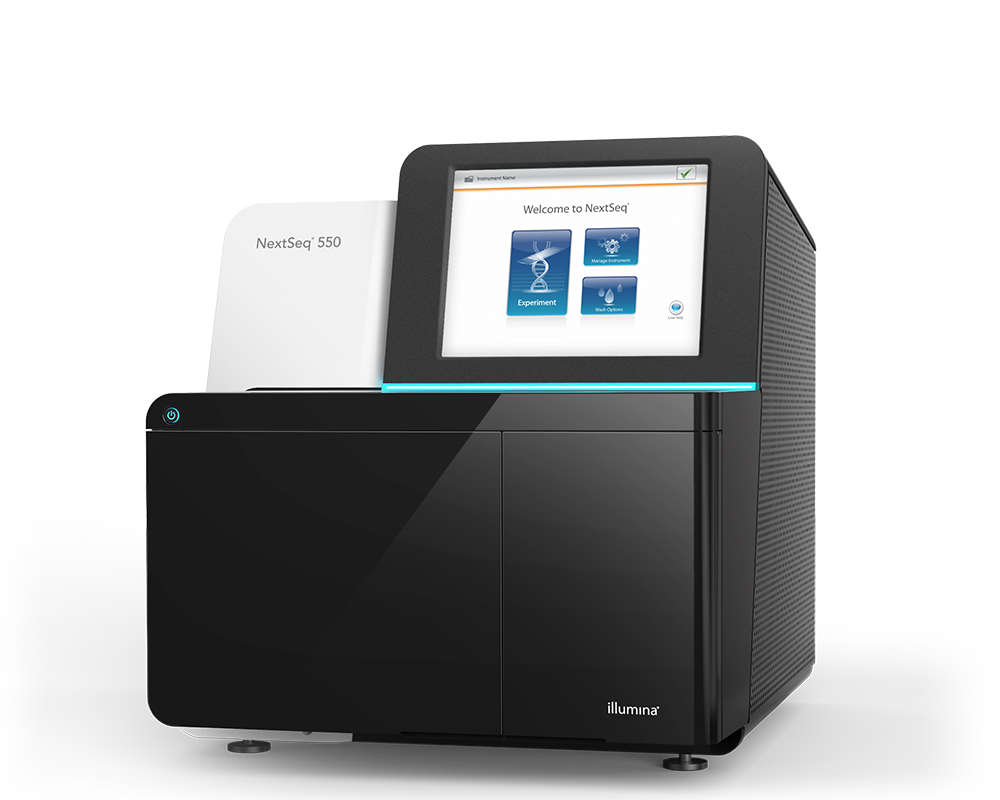NextSeq 550 Training
-
Overview
-
-
Introductory Topics
DATE/
LENGTH -
How Do I Prepare for My Illumina Instrument Delivery?
In this video, an Illumina Field Applications Scientist discusses what to expect during the pre-installation, shipping, and delivery stages. We’ll highlight important steps in the process and introduce you to available resources. Note that, depending on your region, the steps shown in this video may not apply to the iSeq 100 system.
7 min
-
NextSeq 550: Preparing for Your Install
This course provides an overview of the key components of the NextSeq 550 instrument, as well as the lab, computing, and electrical requirements for installation.
15 min
-
NextSeq 550: System Overview
By the end of this course, you will be able to: identify features of the NextSeq 550 system, describe NextSeq sequencing technology, and describe the simplified sequencing workflow of the NextSeq system.
20 min
-
Sequencing Analysis Viewer (SAV): A Beginner's Guide
Recorded Webinar (December 2020) | The Sequencing Analysis Viewer (SAV) Software is an application where users can view important quality metrics generated during sequencing runs. This webinar will provide a guided tour for beginners on how to use SAV, as well as tips and tricks for reviewing the most useful information for sequencing runs. This webinar is targeted at new users and will go over the following topics: how to load data into SAV, what metrics are available in each tab of the software, and understanding which are the most valuable metrics for run review and where to find them.
-
Sequencing: Introduction to Sequencing By Synthesis (SBS)
Recorded Webinar (January 2021) | Illumina next-generation sequencing technology allows for massive parallel sequencing. Illumina Technical Support invites you to join us for a presentation and discussion on sample preparation, cluster generation and sequencing by synthesis chemistry. This webinar is targeted to those new to next-generation sequencing and will discuss the following topics: Illumina library construction, cluster generation methods by platform, sequencing by synthesis, and multiplexing and primary analysis.
-
Library Prep
-
-
AmpliSeq for Illumina: Library Prep Protocol
This course identifies the items needed for the AmpliSeq for Illumina library prep protocol, introduces pool planning resources for a multiplexed amplicon run, demonstrates the steps in the library prep protocol, and lists best practices for the protocol.
30 min
-
AmpliSeq for Illumina: Overview
This course describes the AmpliSeq for Illumina assay technology, lists the three types of panels, introduces the steps in the amplicon sequencing workflow, and lists the analysis options for amplicon sequencing data.
15 min
-
Illumina Experiment Manager
This course provides an introduction to Illumina Experiment Manager, and shows you the steps to create sample plates and sample sheets.
25 min
-
Instruments & Software
DATE/
LENGTH -
Discover the Benefits of Illumina Proactive
Learn about the benefits of instrument performance monitoring through Illumina Proactive, a service in which instrument performance data are sent to Illumina to enable proactive maintenance.
10 min
-
IT Requirements for Implementing Illumina Proactive
This video shares IT requirements for implementing Illumina Proactive, an instrument performance monitoring service provided by Illumina that can increase instrument uptime, improve operational efficiency, and reduce the risk of lost resources.
4 min
-
Diagnosing Suboptimal Clustering in Nonpatterned Flow Cells
Learn which run metrics and thumbnail images to monitor during a run to diagnose over clustering of a nonpatterned flow cell.
8 min
-
Local Run Manager v2
This course shows you how to get started using the Local Run Manager v2 software to set up your sequencing runs and view analysis results. Local Run Manager v2 is available for MiniSeq instruments using MiniSeq Control Software v2 or later, NextSeq 500/550 instruments using NextSeq Control Software v4 and later, and MiSeq instruments using MiSeq Control Software v3.
Languages: French, Italian, German, Spanish, Chinese (Simplified)
20 min
-
Local Run Manager v4
This course shows you how to get started using the Local Run Manager v4 software to set up your sequencing runs and view analysis results.
20 min
-
NextSeq 550: Does My Run Look Good?
This course introduces four options for monitoring your NextSeq 550 run. It also describes key metrics in NextSeq Control Software (NCS), Local Run Manager, Sequencing Analysis Viewer (SAV), and BaseSpace Sequence Hub.
10 min
-
NextSeq 550: How to Start a Run
By the end of this course, you will be able to: identify the steps to start a run on the NextSeq 550, describe how to prepare the reagent cartridge, and start a sequencing run using NCS.
20 min
-
Optimal Cluster Density Best Practices
This video discusses optimal cluster density and how over and under-clustering can affect your sequencing data. It also examines common clustering issues and ways to prevent them.
10 min
-
Data Analysis
DATE/
LENGTH -
BaseSpace Sequence Hub: Introduction and Analysis Overview
Recorded Webinar (May 2020) | llumina Technical Support invites you to learn about BaseSpace, Illumina’s cloud-based sequencing data analysis solution. In this presentation, we will discuss how to navigate the BaseSpace dashboard, general BaseSpace functionally, and tips and tricks for successful application and workflow utilization. We will cover the following topics: How to upload/view data in BaseSpace, discussion of major analysis workflows, general overview of how to analyze data on BaseSpace.
Please note: BaseMount and BaseSpace CLI are alpha software releases; features and functionality may change over time, and support is directly through Illumina software development.
-
Diagnosing Suboptimal Clustering in Nonpatterned Flow Cells
Learn which run metrics and thumbnail images to monitor during a run to diagnose over clustering of a nonpatterned flow cell.
8 min
